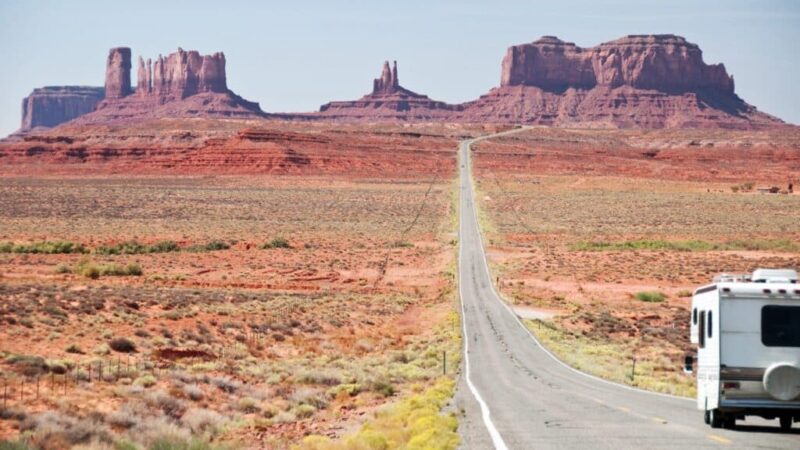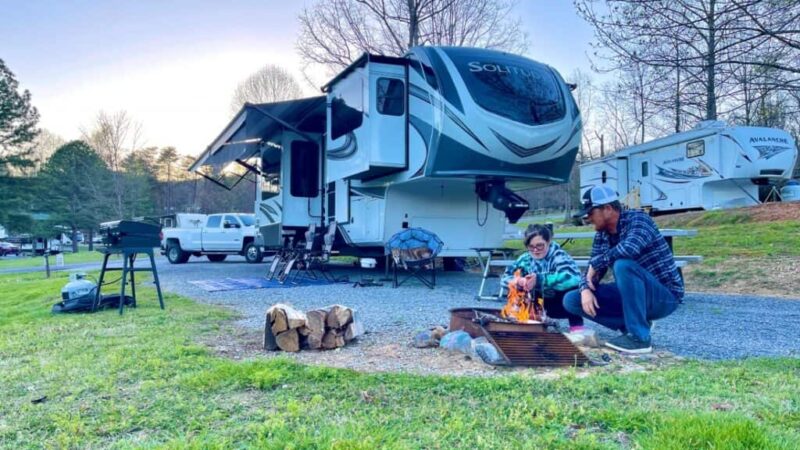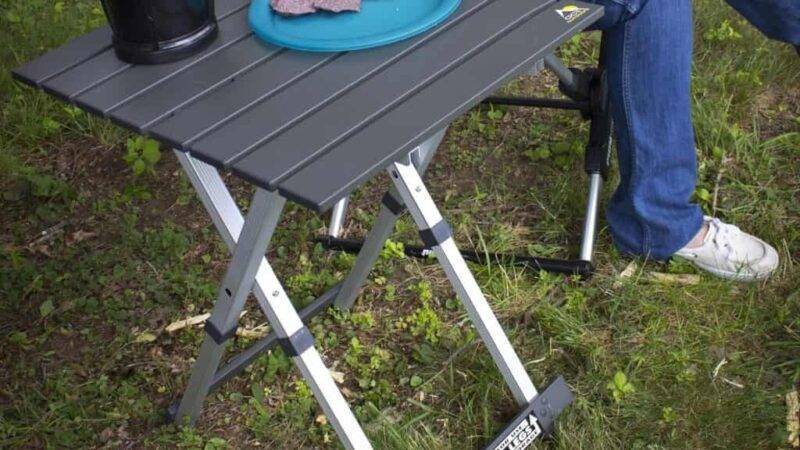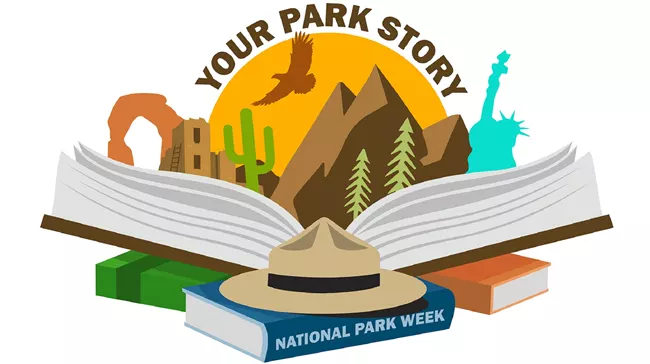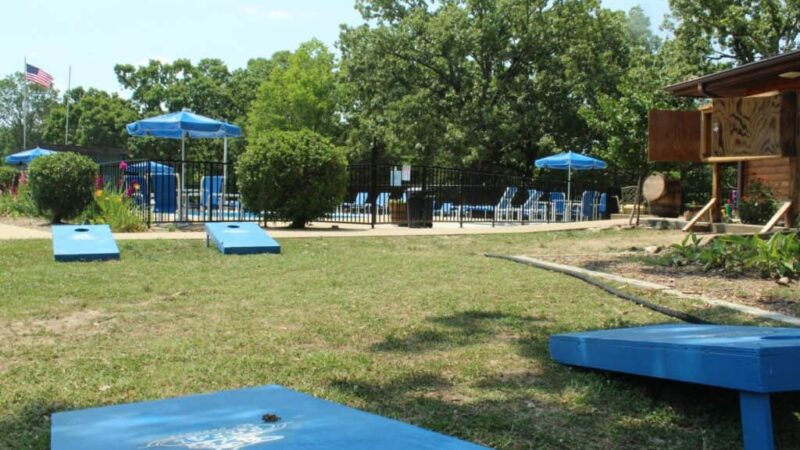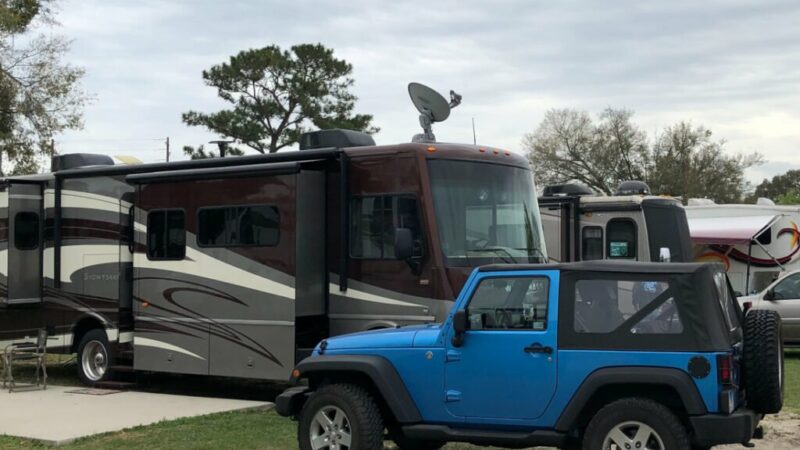RV on a Budget: 6 Tips For Cheaper RV Living
Are you wondering how to full-time RV on a budget? The RV lifestyle can be expensive, but it doesn’t have to be. There are many ways to reduce your expenses and enjoy cheaper RV living. Cat Carroll (@stu.the.bus) and her boyfriend Aaron have been traveling in their converted school bus since 2018. She shares all the tips she’s learned about how to save money on RV camping and other savings for RV travel.
A version of this article originally appeared in the March/April 2021 issue of Rootless Living Magazine. Subscribe to read the whole issue.
Decreasing the Cost of Full-Time RV Living
In nearly three years of living and traveling full-time in our self-converted skoolie, my boyfriend Aaron and I have learned quite a few ways to save money while still maintaining a standard of living (and cleanliness) that allows us to occasionally enter mainstream society without raising eyebrows.
Driven by a desire to ditch our 9-5s and the mountain of bills that comes with living in a trendy Seattle neighborhood, we bought a school bus in 2017, converted it over the next eight months, hit the road in April 2018, and haven’t looked back since.
Here are our top tips for saving money on the road and cheaper RV living:
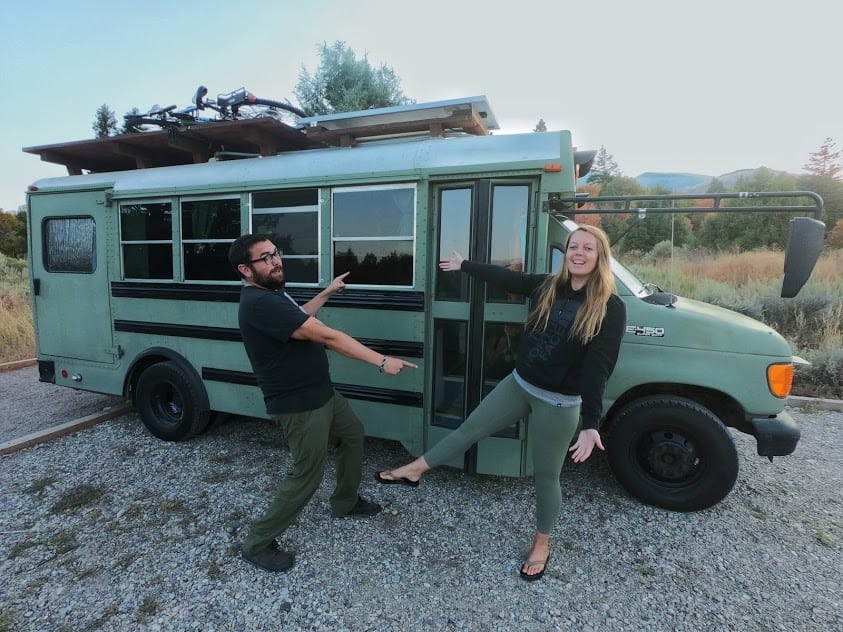
Save Money on RV Camping With Free Campsites
Don’t pay for camping. Especially in the western half of the country. There is a wealth of free camping locations ranging from empty patches of desert to organized campgrounds that include bathrooms, picnic tables, and fire rings. The cost of paid campgrounds and RV parks ranges from roughly $10 to $80 per night, so after three years (1,095 nights) of free camping, we have saved somewhere between $10,950 and $87,600. To put that into perspective, we paid about $50,000 for three years’ rent in Seattle.
Of course, boondocking and staying at most free campgrounds requires that you have a self-contained rig, which is why we invested in a solar energy system, a composting toilet, and a basic plumbing system for our sink, which also doubles as an outdoor shower. These elements provide most of the benefits that would be gained from staying at a paid park, and we don’t have to deal with noisy neighbors just feet away from us. Plus, we have stayed in some absolutely incredible free locations that are arguably just as scenic (if not more so) than paid camping areas.
We find our free camping spots by using resources like freecampsites.net, Campendium, iOverlander, and Google Maps. Unless signage indicates otherwise, most U.S. Forest Service and Bureau of Land Management land allow for 14 days of free dispersed camping. Always be sure to follow Leave No Trace principles when boondocking on public land.
While not technically free, programs like Boondockers Welcome and Harvest Hosts can also help save money on RV camping. Both programs charge a yearly subscription fee, but once the annual fee is paid, all camping is free. However, Harvest Hosts suggests that you spend around $20 at each host location, rendering it actually relatively expensive if you do so.
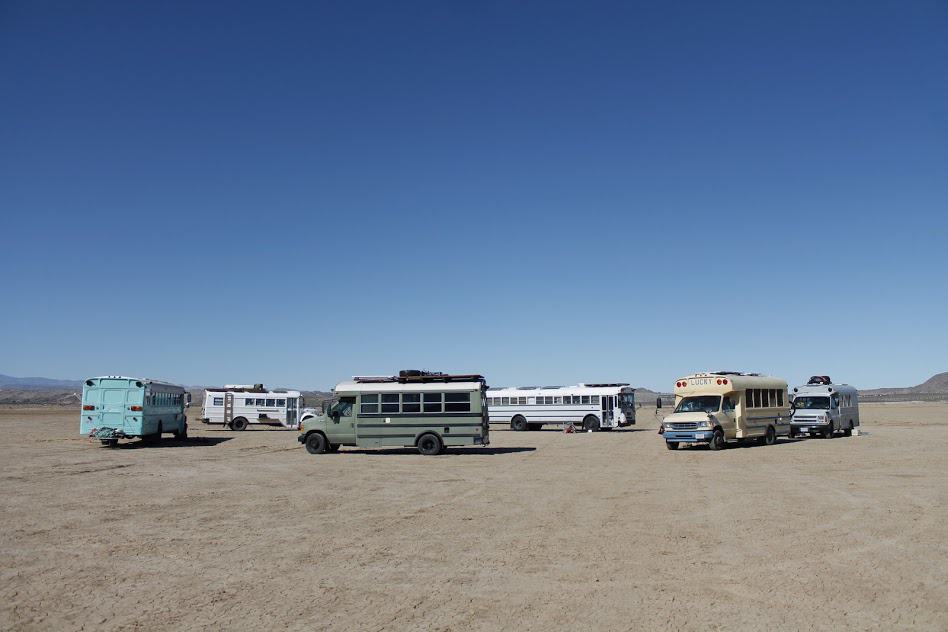
Free Water Can Help You RV on a Budget
Take advantage of free water whenever you can. Many freeway rest stops (especially in the Pacific Northwest) have free dumping stations and clean water stations, which is a huge bonus since many dump and fill stations cost between $10 and $25 per visit. A Google search of rest stops near you can reveal free stations near your location. We always fill every water tank and container we have when we find one of these gems!
Many gas stations in the Southwest also have free dump stations on-site. Although the water there is sometimes labeled as non-potable or not labeled at all, it is usually the same water that comes out of the tap in the gas station building. Because of its proximity to the dump station, they can’t legally label it as potable.
In a pinch, we have hooked up our inline water filter and filled our tanks this way. We haven’t gotten sick or died yet, but use this method at your own risk. We have also taken our seven-gallon water jug inside gas stations and filled it using a funnel at the soda machine water dispenser, then filled our built-in 21-gallon freshwater tank from that. This is somewhat laborious and time-consuming, but it works.
Some campgrounds will also allow you to fill your water tanks for free, even if you aren’t staying there. KOAs are particularly generous with this but call ahead to make sure the one near you offers this service.
Many national parks also have free dump/fill stations, especially if they have campgrounds. We usually have an annual national parks pass and visit parks frequently to hike and see the sights, so we count this as free water.
When there’s no free water to be had (ahem, most of Arizona), we take two seven-gallon jugs into Walmart locations when we grocery shop and fill them at the purified water stations for 29 cents per gallon. These water fill stations can be found at many different locations and range in price from roughly 15 to 40 cents per gallon.
It does require some extra effort to then dump the water into our fill hatch to replenish our built-in tank, similar to the gas station method. However, this way, we don’t have to make an extra stop, and we can get our water for the week for less than $5. A great hack for cheaper RV living!
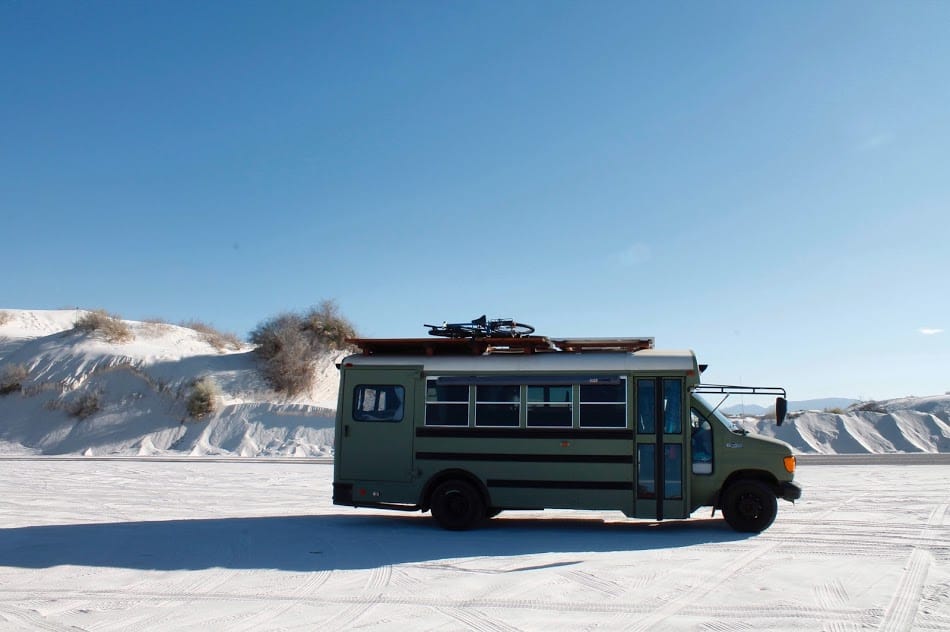
Gas Adds Up In an RV Lifestyle Budget
Never stop at the first gas station in town. Our bus has a 55-gallon diesel tank which is amazing when we can go around 600 miles without refilling, but it can really put a dent in our wallets when the time comes to fuel up. We occasionally use the GasBuddy app to find the cheapest diesel nearby, but we have some trust issues with that app after it directed us to a gas station in downtown San Francisco on a Friday night during rush hour that didn’t actually turn out to sell diesel at all, leaving us running on fumes.
As a rule of thumb, we never stop at the first gas station that we come to, especially after a long stretch with no services. We learned once the hard way that these stations levy a convenience fee, sometimes charging up to 40 cents more per gallon than another gas station mere blocks away. With our massive tank, that’s roughly a $20 difference in the cost of full-time RV living.
On a similar note, we always try to avoid purchasing fuel in California whenever possible because the prices there are always much higher than in the surrounding states.
Finally, we always fill up before heading into an area with few services, such as national parks or unpopulated areas. We once saw diesel going for $6 per gallon in Death Valley!
Free Entertainment Equals RV Travel Savings
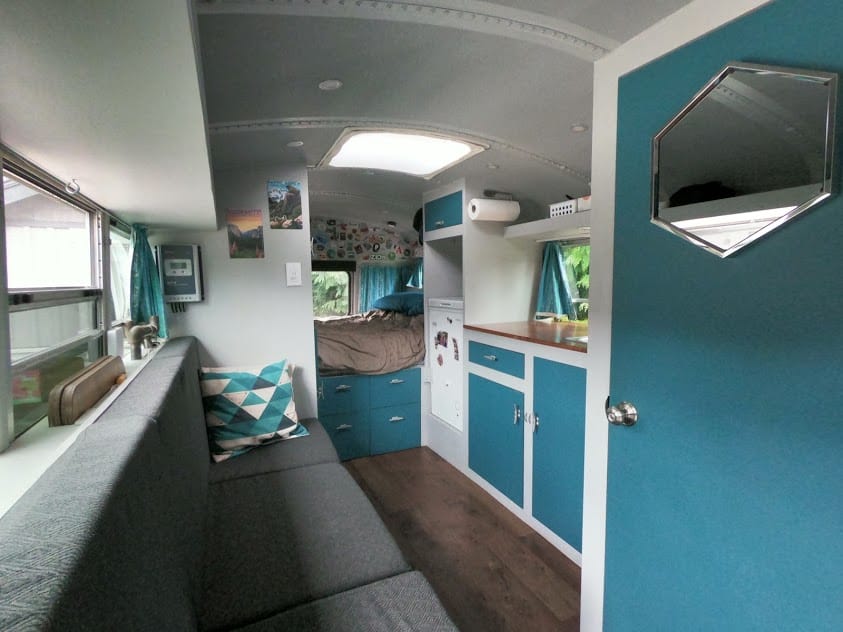
Opting for free entertainment is key to cheaper RV living. One of the biggest things that helped us decrease the cost of full-time RV living is that we switched to mostly-free entertainment options as opposed to frequently going out in Seattle.
We estimate that we used to spend roughly $400 a month just going out for drinks or dinner, $160 a month on climbing gym memberships (which serves as both a fitness and a social activity for us), and $200 a month on extraneous things like cable, various subscriptions, clothes, haircuts, and going to movies or shows.
While on the road, we spend maybe $50 a month visiting local breweries (pre-COVID-19, obviously) and otherwise choose free entertainment options like hiking, outdoor climbing, paddleboarding, hanging out with friends we meet on the road, watching movies, or playing games. This not only saves us money but is also much healthier.
Health Insurance Eligibility For Safer and Cheaper RV Living
Sign up for free health insurance if you are eligible. One of the best parts of living on the road is having to work much less since we have relatively few bills and expenses thanks to cheaper RV living. As a convenient result, while we live comfortably off our part-time freelancing incomes, we technically fall below the federal poverty line, which makes us eligible for free health insurance through the Affordable Care Act and Medicaid.
With the average cost of a private health insurance plan at somewhere around $450 per person per month, this is a huge saving for us. Additionally, it gives us some peace of mind in case of injury or illness, and we don’t have to pay the penalty for not having coverage.
Shop in Bulk For Cheaper Living in an RV
Shop based on your location and the season, and buy in bulk when you can.
One of my favorite foods is avocados, which range dramatically in price and quality based on where we are located. It can cost upwards of $1.50 per small avocado in the Pacific Northwest, and usually, at least one out of the handful that I select will not be good, whereas I’ve found them for 33 cents apiece in Walmarts in the Southwest and never gotten a bad one.
Previous to bus life, we would buy whatever groceries we felt like eating, mostly regardless of the price. Now, however, we pay much closer attention to the prices of things and what will keep for a decent period of time in our non-climate-controlled bus with very limited refrigeration space.
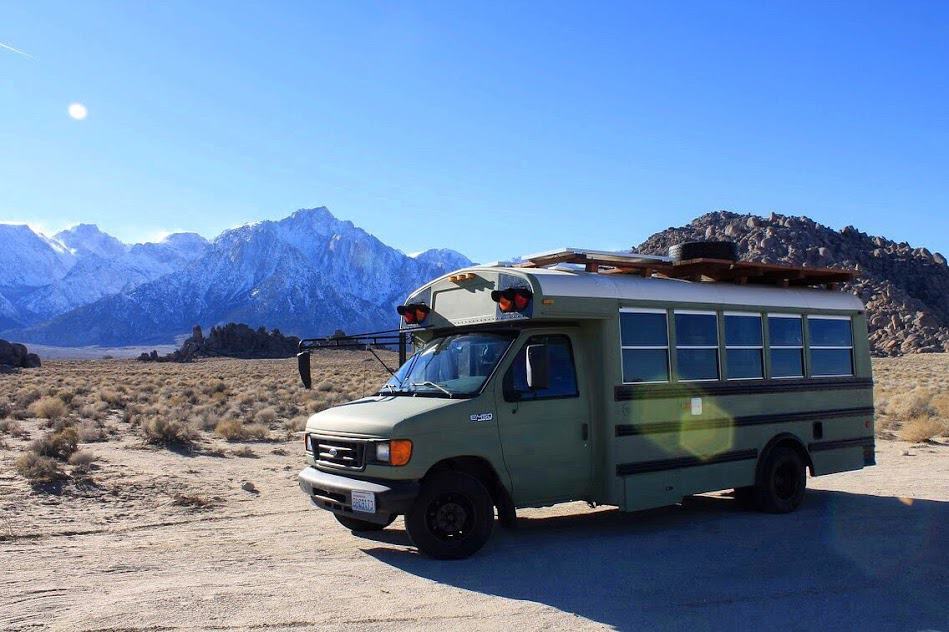
For instance, we learned quickly that bread products and bananas were a no-go in the humid Austin heat. We are much more careful in selecting foods that fit our location and season, which saves us money at the store and prevents us from wasting food that spoils.
Finally, while storage space is obviously limited, we do stock up on certain things at Costco when we happen upon one because the bargains are just too good. We mostly opt for shelf-stable items that we frequently use, like quinoa, chicken stock, cans of LaCroix, and the obscenely-large bags of Boom Chicka Pop that are only available at Costco.
Tips That Add Up to Cheaper RV Living
The cost of full-time RV living can vary dramatically from person to person, depending on one’s standard of living, but by following a few of our tips, we’re confident you’ll be able to cut your finances where it makes sense for you. Being a digital nomad is all about having the freedom to live your life more intentionally — and by being intentional with your finances, you’ll be happier on your journey.
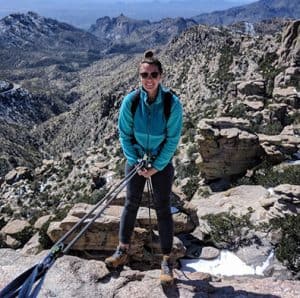
About the Author: Full-Time Skoolie Traveler Cat Carroll
Cat is originally from Seattle, WA but has traveled around the U.S. and Canada full-time in a self-converted skoolie with her boyfriend Aaron since April of 2018. She enjoys rock climbing, paddle boarding, hiking, and generally being outdoors! You can follow her adventures on Instagram at @stu.the.bus.
Source: https://rootlessliving.com/budget-cheaper-rv-living/

